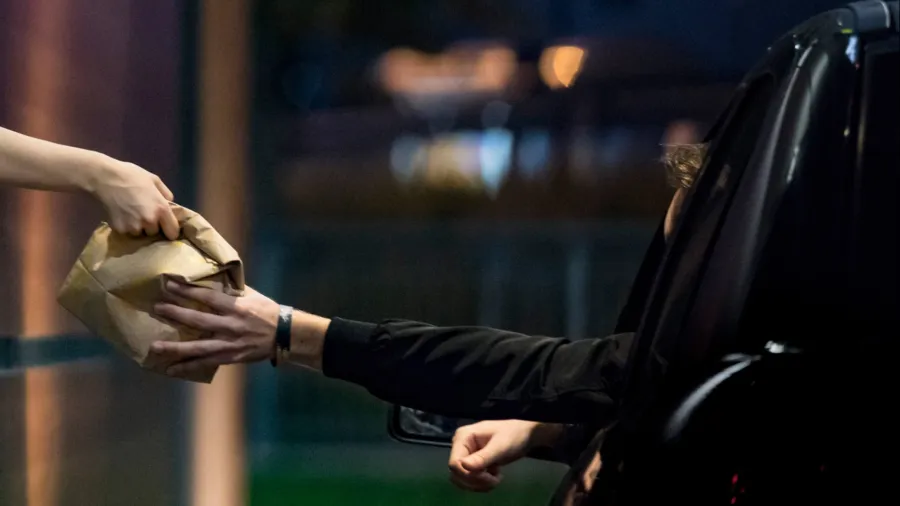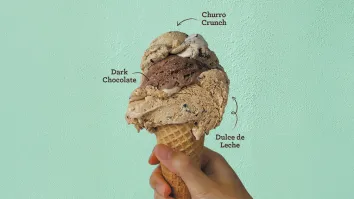
Redefining drive-thru customer experience with Eyecue™
The customer journey within drive-thrus may be short, but it spells success or failure for QSRs in the new normal.
In 2020, McDonald’s recorded the world’s highest number of drive-thru lanes, collecting 70% of its revenue from across 25,000 drive-thrus alone. The famous restaurant chain is planning to add even more lanes in the next few months, as customers continue to avoid indoor dining and lengthy face-to-face interactions with restaurant crew.
Other QSRs have also seen a marked increase in drive-thru sales. Before the pandemic, restaurant counters were ringing in 50% to 75% of sales from drive-thru windows. This number shot up to as much as 95% when COVID hit¹.
While queues are deemed to be a sign of good business, long wait times have actually been costing QSRs in the United States to the tune of $32,091,334 annually per 1,000 stores. This number likely ballooned amidst COVID-19, as one study revealed that drive-thru wait times in 2020 slowed a further 30 seconds across 10 QSRs in the US².
With the pandemic anticipated to linger, drive-thrus will inevitably see increased traffic and longer queues. Customers are also settling comfortably in the new normal, and drive-thrus will continue to play a big role for QSRs post-COVID.
The bigger question is whether QSRs are ready to manage the fast increasing volume of orders and avoid common problems: customers baulking or leaving in the middle of a queue and customers receiving wrong orders or missing items. Merely adding more lanes and setting up pick-up points might not be enough.
Luke Irving, founder and CEO of Fingermark™, said that in the age of COVID, the whole restaurant parking lot is a huge opportunity waiting to be unlocked. With traffic building up quickly, QSRs should innovate and reimagine the entire customer journey, from how customers place their orders to the moment they receive them, including the experience of driving around or waiting by the restaurant.
Revolutionising drive-thru technology
Many restaurants primarily use loop detection drive-thru technology to capture volume and speed of traffic with no real time actionable insights. What’s more, this technology requires ongoing maintenance, is often riddled with installation errors, and is only 70% accurate on average, according to Fingermark™’s Step out of the Loop whitepaper.
Fingermark™ developed and launched Eyecue™ well before the pandemic hit. It is an AI-powered, machine vision technology that provides real-time insights and empowers restaurant teams to take immediate action to drive operational efficiency and enhance the customers’ experience at the drive-thru.
“Drive-thrus are now the most complex piece of road in the world. So much is going on and there are so many variables to success including velocity, speed and motion metrics. The basis of success in this industry is all around convenience and speed of service to provide a better customer experience,” Irving said.
With Eyecue™ cameras placed prior to the order point, real-time alerts advise restaurant teams as cars start to pile up at the restaurant’s drive-thru entrance. This enables them to decide how best to respond. For example, they could add another cashier or presenter to cut traffic quickly.
Eyecue™ can also detect when presenter window time is increasing or when customer journey times are over target, thus necessitating the utilisation of wait bays or alerting the store manager that additional staff are required on the drive-thru.
With the number of cars increasing in parking lots or wait bays, Eyecue™ uses licence plate recognition (LPR) and reacquisition technology together to help ensure that the right car receives the right order.
Re-acquisition technology works on the car’s visual features using overlapping cameras at different angles. Other technologies use only LPR, which will not help if the licence plate is obscured from view.
Customers crave convenience
Across Australia and beyond, Eyecue™ has helped restaurants take payments four seconds faster and serve food 6 seconds faster, resulting in true journey time that is 10 seconds faster.
But with curbside services – pick-up or dining – increasing in popularity, customers can also choose to receive their orders at designated parking places or pick them up at specific points within the restaurant lot, just not indoors or in the drive-thru.
----------
² https://www.seelevelhx.com/2020-drive-thru-study/


























